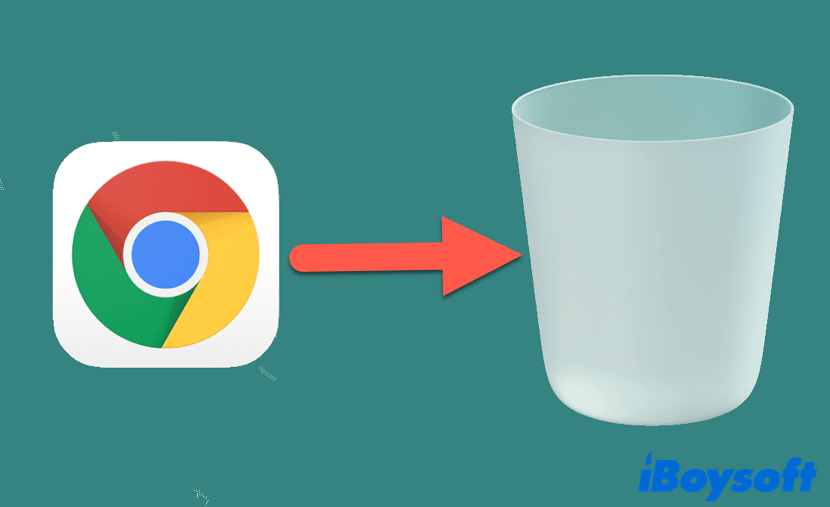
Google Chrome is the most popular and widely used web browser so far. With its fluency, security, complete Google Account integration and extensive feature set, Chrome has established itself as an industry benchmark for web browsers. However, you may want to uninstall it from your Mac for various reasons.
Whether you are going to free up space on Mac, switch from Google Chrome to other web browsers (like Safari or Firefox), or just think Chrome isn't the perfect browser for you, it is necessary to know how to uninstall Chrome on Mac properly. That's why this article comes in! Read on for more information.
| How to uninstall Chrome on Mac | Effectiveness |
| Use CleanMyApp | High, completely remove Chrome from Mac with a few clicks |
| Manually uninstall Chrome on Mac | Low, takes time to delete the app and support files manually |
The easiest way to completely uninstall Chrome on Mac — CleanMyApp
Uninstalling apps on Mac sounds like a simple task, but do you know that merely moving an app from the Application folder to Mac Trash is still a long way from completely purging it from your Mac? Despite the app itself, some leftover files are still hiding in your device.
That's why we recommend you use CleanMyApp, a lightweight uninstaller, to fully uninstall Chrome on Mac. It completely removes all traces of unwanted or problematic apps from your Mac computer, ensuring that no unnecessary files or cache are left behind.
With it, you can uninstall Chrome and remove its associated files from Mac, including supporting files, cache files, status files, log files, preferences files, sandbox files, etc., in a few clicks. Besides, you can get rid of multiple unnecessary apps together.
How to uninstall Google Chrome on Mac completely:
Step 1: Download and install CleanMyApp from the Mac App Store.
Step 2: Open the uninstaller, select Google Chrome from the app list, then click Uninstall.
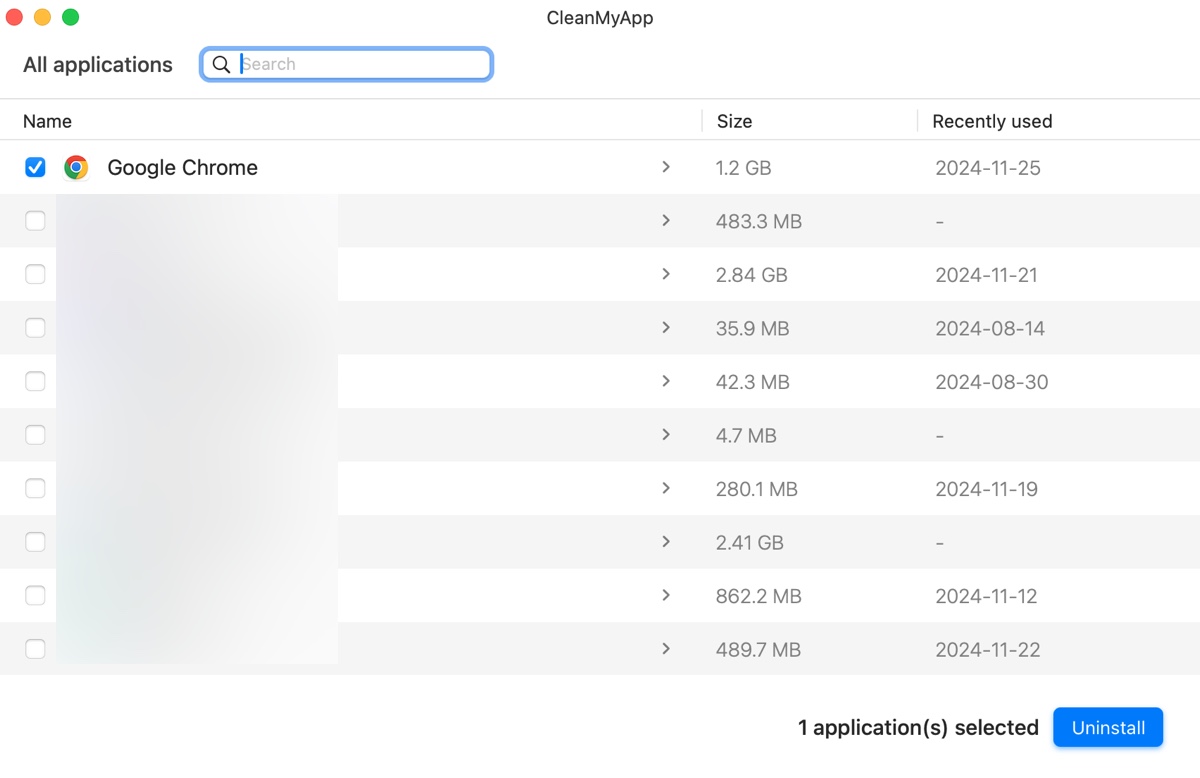
Step 3: Tap Confirm Uninstall to continue the uninstalling process. Enter your password if asked.
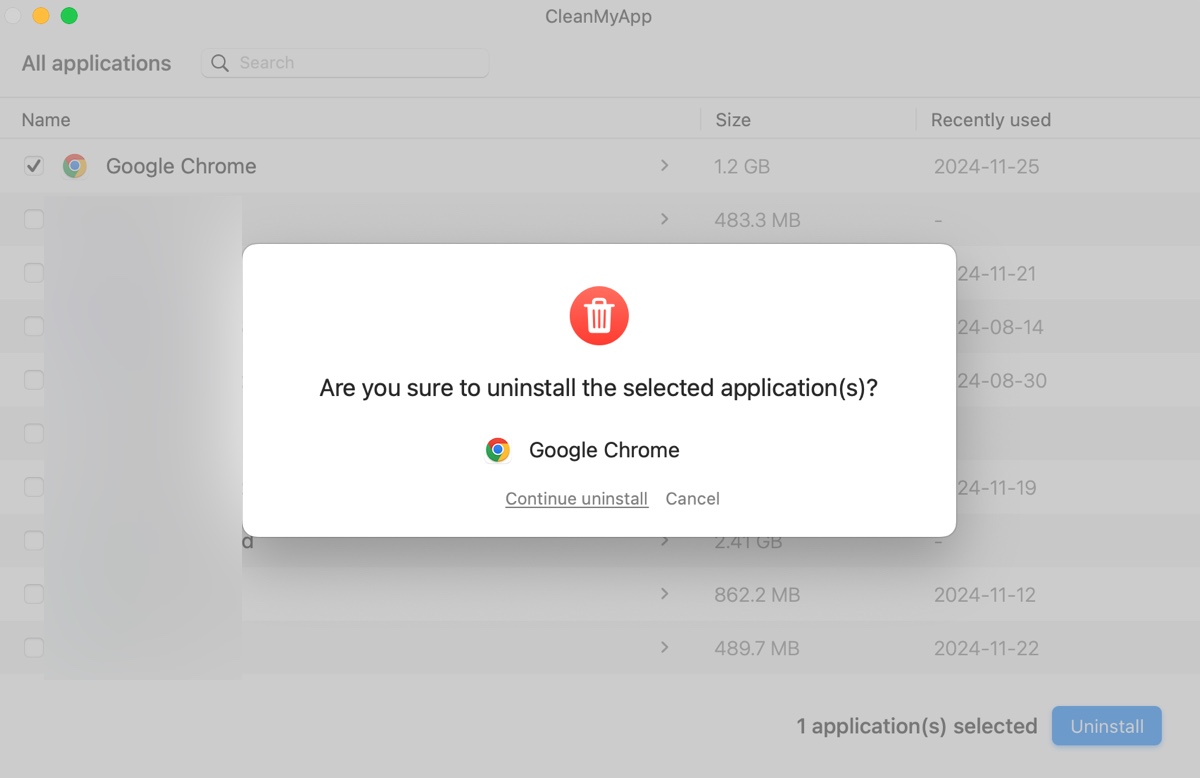
Step 4: Wait for Chrome to be fully uninstalled.
Step 5: Click Finish when all files related to Chrome are removed.
Completely uninstall Google Chrome on Mac? Share this guide with more people now!
How to completely uninstall Chrome on Mac manually
You can also manually remove Google Chrome from your Mac, although this is not the best uninstall solution and takes a little more time and effort. In addition, please make sure to clear all its service files (profile information). For more detailed instructions, please keep reading.
How to clear browsing data on Chrome
Before we dive in to uninstall Google Chrome on Mac manually, it's a wise move to erase all your browsing history and data on Chrome first. By default, Chrome stores cookies, caches, browsing histories, and passwords in browsing data.
All these data may remain on Google's servers or on other devices you own that are linked to your Google accounts and Google apps after you remove Chrome from your Mac computer. So, you can follow these steps to manually clear Chrome browsing data:
- Launch Google Chrome on your Mac computer.
- Click the three-dot menu icon at the top right, then select More Tools > Clear Browsing Data. Also, you can press the Command + Shift + Delete keys together, it works the same.
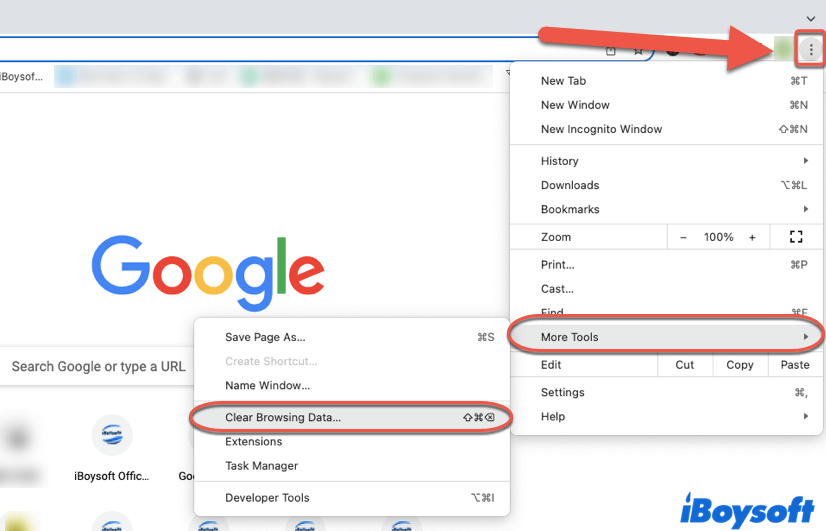
- A pop-up window appears, open the Time range drop-down menu, select a wanted time range (All time is recommended), then tick the checkboxes next to Browsing history, Cookies and other site data, and Cached images and files, click the Clear data button.
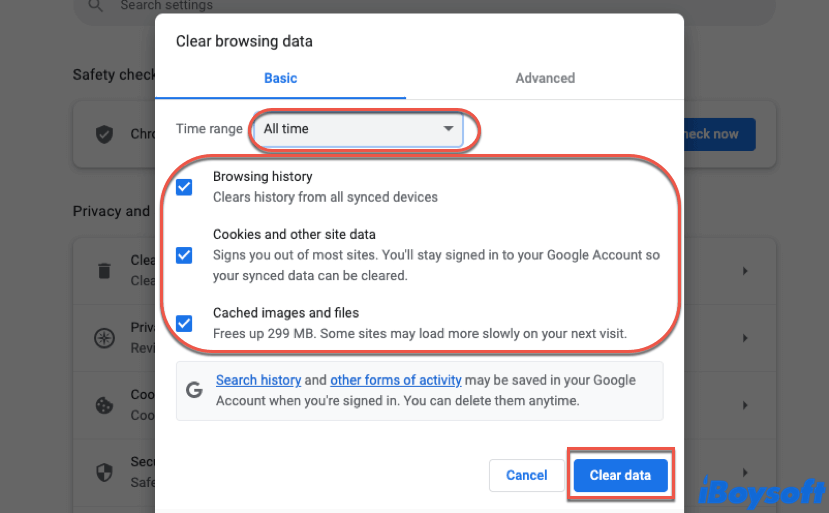
Now, all your Chrome browsing data is removed successfully. It's time to uninstall Google Chrome from your Mac, let's get started!
How to uninstall Chrome on Mac manually
Specific steps to delete Chrome from Mac manually:
- Make sure Google Chrome is not running on your Mac. If it is running, you can quit it by right-clicking on the Chrome app in Mac Dock and then choosing Quit.
- If there's something wrong with Chrome like it would not respond or is frozen, you can press the Command + Option + Esc keys to open the Force Quit Applications window, then force quit an app on Mac there.
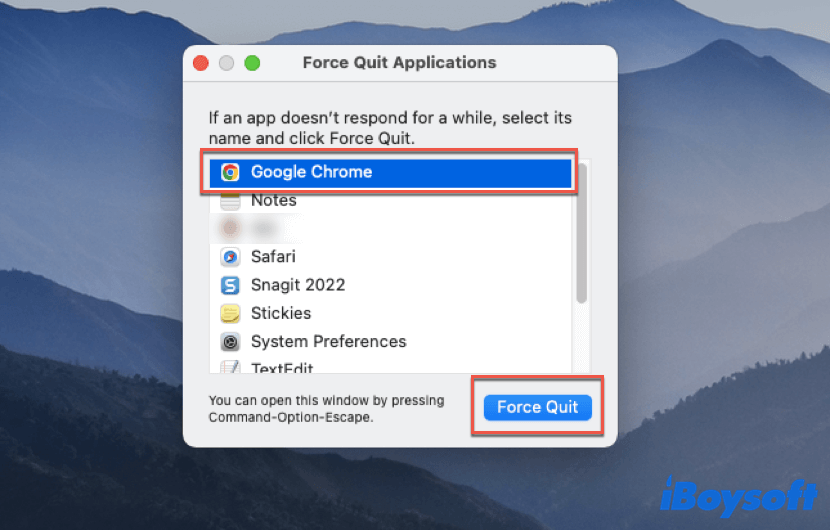
- Launch Mac Finder, and click on Applications from the left column.
- Right-click on the Chrome app, then choose Move to Trash. Please note, dragging Chrome from the Dock into Trash will not finish uninstallation, but merely remove it from the Dock.
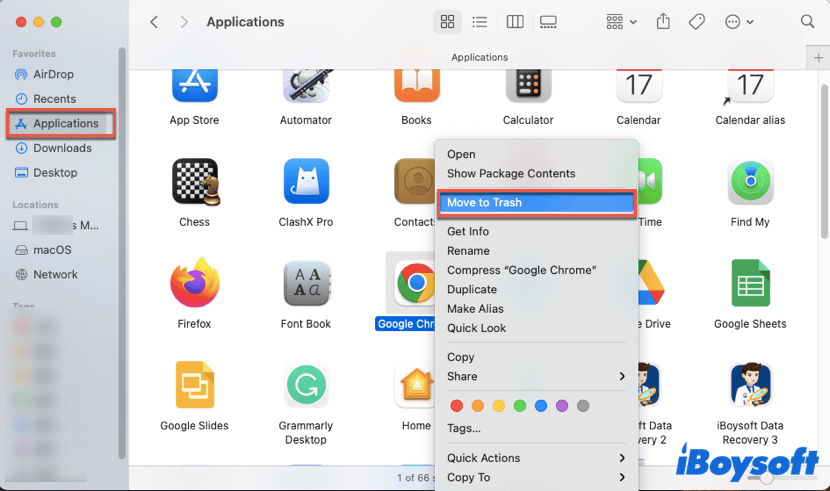
- Right-click on the Trash and choose Empty Trash. Now Google Chrome is gone from your Mac.
Uninstalling Chrome from your Mac in this way would not delete all leftover files on your Mac. When Chrome is gone, all its related files (profile information) are useless, not only taking up storage space but also slowing down your Mac. So, it's crucial to eliminate all Chrome service files.
How to remove Chrome service files on Mac
Specific steps to remove Chrome services files:
- Launch Finder on your Mac computer, then press the Command + Shift +G keys together. Or, in the Apple menu, click Go > Go to Folder.
- In the Go to Folder window, type ~/Library/Application Support/Google/Chrome, then click the Go button. It will bring you the folder where Chrome stores its service files.

- Select all files and folders in this folder (you can do it by a keyboard shortcut: Command + A), right-click on them, and choose Move to Trash.

- Right-click on the Trash in your Mac Dock, then tap on Empty Trash. Now, all Chrome-related data will be completely removed from your Mac.
If you think this content is helpful, share it with more people!
Conclusion
In this article, we tell you how to uninstall Chrome on Mac. To completely remove it from your device, simply dragging the Chrome app to Mac Trash will not do. You'll need to clear Chrome service files from your Mac. In short, iBoysoft MagicMenu is the most recommended solution to uninstall Chrome with just a few clicks.
If you lose something after the Chrome uninstallation, like bookmarks or so on, head to recover Chrome bookmarks on Mac directly, or even you can download Chrome and install software on your Mac to fetch the bookmarks.
FAQ about how to uninstall Chrome on Mac
- QWhy can't Mac uninstall Chrome?
-
A
If you fail to uninstall Chrome from your Mac computer, and get this message 'Please close all Google Chrome windows and try again' when trying to do it, it could be that Chrome is running in the background. Simply quit it and uninstall it again.
- QIs uninstalling Chrome on my Mac safe?
-
A
Yes, Chrome is just a web browser, which has nothing to do with your Mac's operating system. After uninstalling it, your Mac will automatically switch the default browser from it to Safari, worry not.